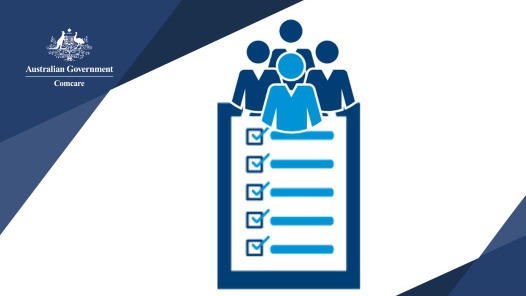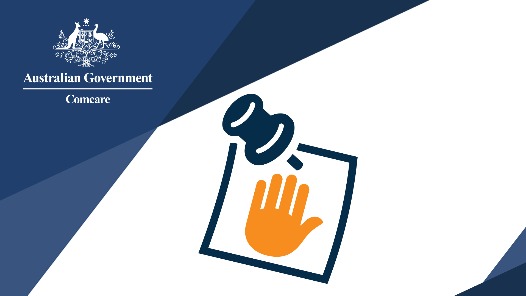Chemical hazards
A hazardous chemical can be a solid, liquid or gas. It can be a pure substance, consisting of one ingredient, or a mixture of substances.
It can harm the health of a person who is exposed to it.
Types of chemical hazards
Chemical hazards include:
- skin irritants
- carcinogens
- respiratory sensitisers.
Physicochemical hazards include:
- chemical explosions and fire
- corrosion
- chemical reactions.
These hazards generally result from a substance's physical and chemical properties.
Harm from chemicals
The harmful effect on a worker’s health is from direct contact or exposure to the chemical, usually through inhalation, skin contact or ingestion.
See Responding to an incident if your workplace experiences a chemical spill or incident and you need to notify us.
If you are not sure a chemical is safe
Treat any unknown substance as a hazardous chemical until it is proven not to be hazardous.
Notify your manager if you encounter an unknown and unlabelled chemical or substance.
The ‘person conducting a business or undertaking’ (PCBU), who is usually the employer, is responsible for identifying the chemical and:
- obtaining appropriate safety information for it, or
- safely disposing of the unknown chemical.
What to do when you encounter a hazardous chemical
You must always follow any health and safety directions about the use of a hazardous chemical.
Always read the safety data sheet, referred to as the SDS, before you use a hazardous chemical for the first time, or any time you are unsure about the risks or necessary precautions to take.
The safety data sheet contains information on:
- the potential hazards of the chemical, such as health, fire and environmental
- how to work safely with the chemical product.
The safety data sheet can help reduce the risks, but not the underlying hazard, of the chemical in your workplace.
A ‘person conducting a business or undertaking’ (PCBU) must:
- ensure their workplace has an up-to-date safety data sheet for every hazardous chemical and that it can be readily accessed by workers
- monitor the health of workers who use hazardous chemicals. This includes workers exposed to lead and asbestos.
See guidance for some types of chemicals:
- airborne contaminants guidance on the interpretation of workplace exposure standards
- carcinogens guidance
- crystalline silica (silica) guidance and silica
- lead guidance.
Chemical labelling and classification
Globally Harmonized System of Classification and Labelling of Chemicals (GHS)
Australia adopted the Globally Harmonized System of Classification and Labelling of Chemicals (GHS) under work health and safety laws on 1 January 2012.
This is an internationally agreed system of chemical classification and hazard communication through labelling and safety data sheets (SDSs) published by the United Nations.
A manufacturer or importer is responsible for determining the hazards of a chemical against specified criteria. This process is known as classification and it determines the information which must be included on labels and the safety data sheet (SDS).
Manufacturers and importers are required to label chemical containers and provide the safety data sheet for each chemical.
They must review the information in labels and the safety data sheet at least once every five years or whenever it is necessary to ensure the information is correct.
The system uses standardised information on labels and safety data sheets (SDSs).
Transition to GHS Revision 7 (GHS 7)
On 1 January 2021, Australia will commence a two-year transition to the seventh revised edition of the GHS (GHS 7).
Moving to GHS 7 will allow Australia to stay up to date with our trading partners and up to date with international best practice for chemical assessment and hazard communication.
During the transition, manufacturers and importers may use either GHS 3 or GHS 7 to prepare classifications, labels and SDSs for hazardous chemicals. From 1 January 2023, only GHS 7 may be used.
During the transition, suppliers and users of hazardous chemicals may continue to supply and use chemicals classified and labelled under GHS 3. However, suppliers and users of hazardous chemicals should not supply or receive stock manufactured or imported after 31 December 2022 if it does not have up-to-date labels or SDSs under GHS 7.
For more information, see:
- GHS 7 – Transition – Safe Work Australia
- Classifying chemicals and Labelling chemicals – Safe Work Australia
- Hazardous Chemical Information System – information on chemicals that have been classified in accordance with the GHS
- GHS Labelling and Dangerous Goods Compatibility guide (PDF, 2.2 MB).
Legislation and Codes of Practice
Legislation and Codes of Practice which describe the key requirements for managing hazardous chemicals are:
- Chapter 7 of the Work Health and Safety Regulations 2011
- Managing Risks of Hazardous Chemicals in the Workplace Code of Practice
- Labelling of Workplace Hazardous Chemicals Code of Practice
- Preparation of Safety Data Sheets for Hazardous Chemicals Code of Practice
- How to Manage Work Health and Safety Risks Code of Practice
Work health and safety (WHS) matters
Notify us of an incident
The ‘person conducting a business or undertaking’ (PCBU) – who is usually the employer – is responsible for reporting notifiable incidents to Comcare.
An incident is notifiable if it results from the conduct of the business or undertaking and causes the death of a person, serious injury or serious illness of a person, or is a dangerous incident.
See Responding to an incident for information on how to notify us and other responsibilities such as preserving the site.
Inform us of a WHS concern
If you are a worker or member of the public, you can inform us of a work health and safety (WHS) concern or contact us if you have a WHS enquiry.
Email whs.help@comcare.gov.au or call us on 1300 366 979.
Workers are encouraged to speak with their employer or health and safety representative (HSR) about their concern in the first instance, if comfortable to do so. This ensures that the employer is aware of the work health and safety concern and provides them with an opportunity to resolve the issue.
After you contact us, we will respond to you within five business days. We will advise you of actions that can be taken and will also let you know if there is another agency or support you can contact.
Training on preventing injury at work
We provide training through our learning management system called Comcare LMS.
To access our training, you first need to create an account in Comcare LMS (see the steps to create an account). Then, select the training item that you are interested in and login with your email and password.

Mode:
Cost:

Mode: Micro-learn Self-paced
Cost: Free

Mode: Self-paced Micro-learn
Cost: Free

Mode: Calendar and In-house
Cost: Paid

Mode: In-house
Cost: Paid

Mode: In-house
Cost: Paid

Mode: Self-paced
Cost: Free

Mode: Micro-learn
Cost: Free

Mode: Micro-learn
Cost: Free

Mode: Micro-learn
Cost: Free

Mode: Self-paced
Cost: Free

Mode: Self-paced
Cost: Free

Mode: Presentation
Cost:

Mode: In-house
Cost: Paid

Mode: In-house
Cost: Paid

Mode: Self-paced
Cost: Free
For more information about the training we offer, see Training and learning.
More information
- Hazardous chemicals guides – Safe Work Australia.
- Major hazard facilities are sites that store, handle and process large quantities of hazardous chemicals and dangerous goods. These facilities have additional requirements, including notification and licensing, which must be followed.
- Responding to an incident if your workplace experiences a chemical spill or incident.
- Silica (also known as crystalline silica) is silicon dioxide and classed as a schedule 14 hazardous substance.
